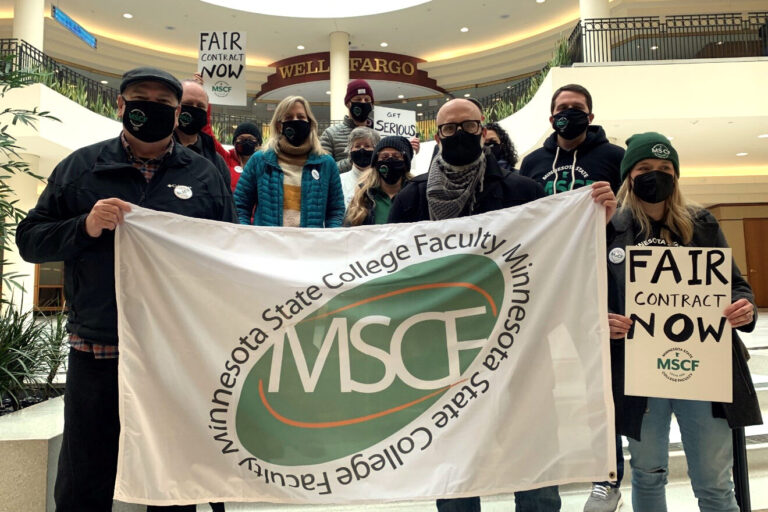By Cedrick Frazier, staff attorney, and David Aron, general counsel
For at least 50 years, higher education institutions throughout the United States have used various forms of affirmative action in their admissions policies. At their core, these policies allow college admissions officers to give an applicant additional points if their race or ethnicity has been historically underrepresented in the school’s student body compared to their numbers in society at large.
In its June decision in Students for Fair Admissions, the U.S. Supreme Court struck down affirmative action programs at Harvard University and the University of North Carolina, holding that consideration of race as a factor in college admissions violates the Fourteenth Amendment of the Constitution. The court held that the affirmative action policies at issue were unconstitutional because they “lack sufficiently focused and measurable objectives warranting the use of race, unavoidably employ race in a negative manner, involve racial stereotyping, and lack meaningful end points.” However, admissions programs may still consider individual statements from applicants about how race affected their life, “be it through discrimination, inspiration, or otherwise.”
Comparing the court’s majority opinion with the dissents reveals a striking divide among the justices, not only in how they interpret the Fourteenth Amendment, but also in their willingness to acknowledge the role that race plays in shaping identity and opportunity in the United States. Unfortunately, Chief Justice John Roberts and the five other conservative justices who joined his majority opinion give short shrift to the historical legacy of racial oppression in this country as well as modern-day disparities in educational opportunity, which educators observe every day in our public schools.
Chief Justice Roberts’ majority opinion concludes, “Many universities…have concluded, wrongly, that the touchstone of an individual’s identity is not challenges bested, skills built, or lessons learned but the color of their skin. Our constitutional history does not tolerate that choice.” This statement is both factually incorrect and breathtakingly naïve. Affirmative action programs, including those of Harvard and UNC, have never treated race as the deciding factor in a student’s admission, and none of the evidence in this case supports such a claim. Moreover, this quote ignores the grim reality that race continues to play a profound role in shaping educational opportunity in the United States.
In their dissenting opinions, Justices Sonia Sotomayor and Ketanji Brown Jackson—the first Latina and African American female justices appointed to the Supreme Court—highlight the many fallacies underlying the majority opinion. Justice Jackson writes, “Our country has never been colorblind. Given the lengthy history of state-sponsored race-based preferences in America, to say that anyone is now victimized if a college considers whether that legacy of discrimination has unequally advantaged its applicants fails to acknowledge the well-documented ‘intergenerational transmission of inequality’ that still plagues our citizenry.”
Justice Sotomayor cites a number of sobering statistics to demonstrate the impact of racial inequality on educational opportunity that continues in the present day. She notes, “underrepresented minority students are more likely to live in poverty and attend schools with a high concentration of poverty. When combined with residential segregation and school funding systems that rely heavily on local property taxes, this leads to racial minority students attending schools with fewer resources.”
While the majority refuses to acknowledge the depths of systemic racism within our institutions, Justices Jackson and Sotomayor are keenly aware of them, in part because they have witnessed them in their own lives. Justice Jackson writes, “Gulf-sized race-based gaps exist with respect to the health, wealth, and well-being of American citizens. They were created in the distant past, but have indisputably been passed down to the present day through the generations. Every moment these gaps persist is a moment in which this great country falls short of actualizing one of its foundational principles—the ‘self-evident’ truth that all of us are created equal.”
Justice Sotomayor aptly reminds us that “racial inequality will persist so long as it is ignored.” Although she was not in the majority, we can and should still heed her words by refusing to ignore racial inequality when we see it in our schools. When we see policies or practices that have disparate racial impacts, we should call them out and work to change them. When we see students with tremendous potential, but who lack the resources, networks or self-confidence to see a post-secondary degree or certification in their future, we should go out of our way to eliminate those barriers.
Although this is a majority decision from our Supreme Court, it is drafted from a perspective closely aligned with the drafters of the original constitution. Thus, it is sadly and tragically misaligned with the intent of the Fourteenth Amendment, which sought to protect and ensure that the newly freed people and their descendants would be included equally and equitably in the prosperity of the nation made possible by their unpaid labor. Therefore, it is imperative that this decision not be the final word on how educational institutions address racism in our society. It certainly should not stop educators or their unions from working to make our schools places where students from all racial and cultural backgrounds are seen, valued and have a fair opportunity to thrive.




